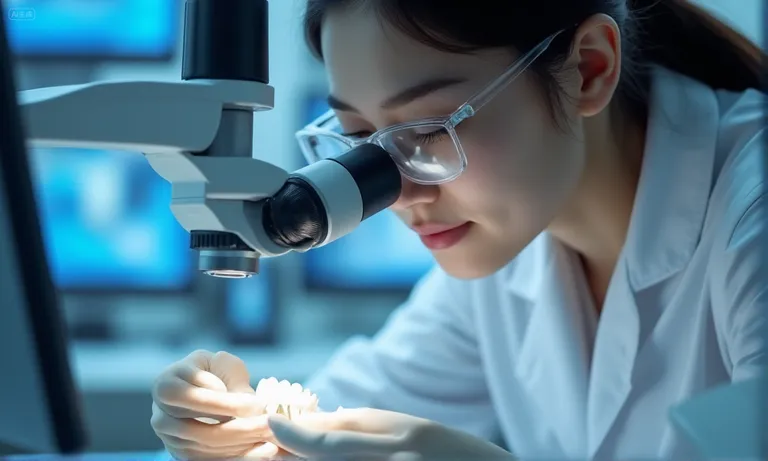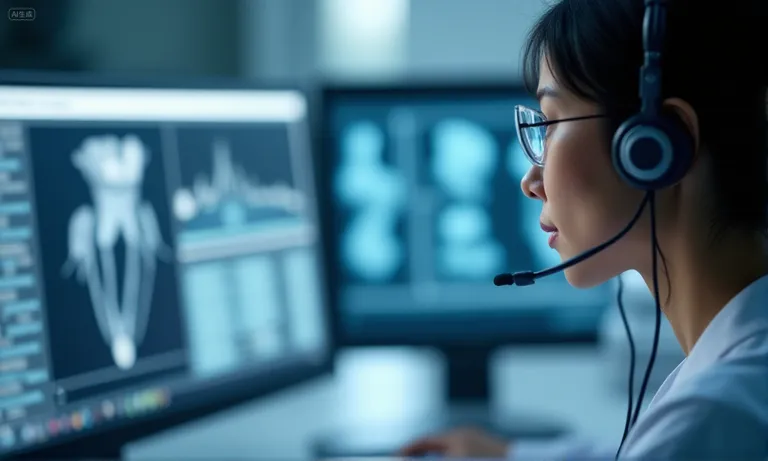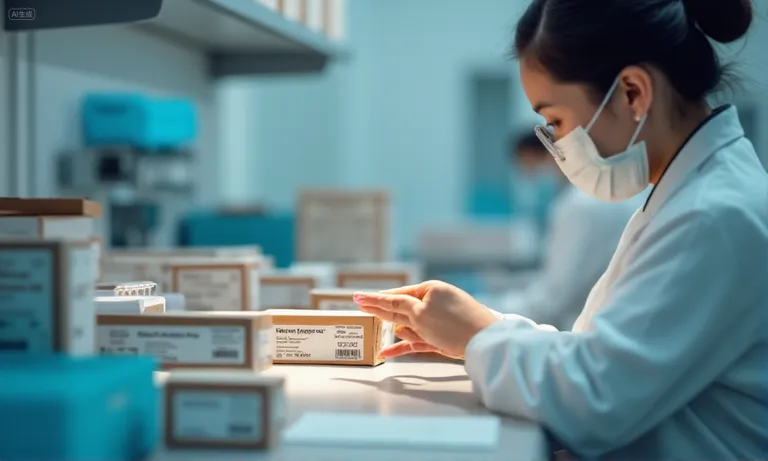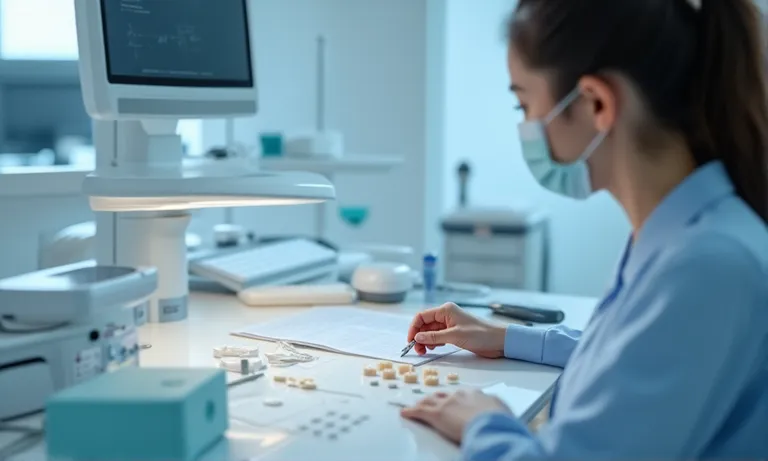Evaluating the quality of a dental implant lab requires clear criteria that reflect both technical standards and collaborative reliability. The most trustworthy partners combine proven expertise, recognized certifications, and consistent craftsmanship to deliver implant restorations that meet international expectations.
- Experience & Reputation: Years in business, industry certifications (ISO, FDA, NBC, NADL), and credible reviews.
- Craftsmanship & Materials: Case samples, material durability, biocompatibility, and CAD/CAM precision.
- Communication & Support: Responsiveness, dedicated coordinators, and digital file compatibility.
- Turnaround & Delivery: Predictable lead times, urgent case handling, and reliable logistics.
- Customization & Flexibility: Adapting to unique implant cases and offering multiple material options.
- Pricing & Value: Transparent, itemized costs without hidden fees, prioritizing ROI over the lowest quote.
By weighing these benchmarks, procurement teams can reduce risk, build trust, and identify overseas dental labs capable of delivering consistent implant quality. A structured evaluation process not only secures dependable supply chain value but also fosters long-term collaboration that strengthens clinical outcomes and business stability.
How Do Experience and Reputation Signal a Trustworthy Dental Lab?
A dental lab’s experience and reputation often act as the first signals of reliability. Years in business demonstrate technical maturity and stability, while recognized certifications show compliance with international standards. Reviews and word-of-mouth further provide social proof that the lab consistently delivers quality implant restorations. Together, these factors help procurement teams separate credible partners from risky ones.

Dental-lab-experience-and-reputation
Why do years in business matter for stability and expertise?
Longevity reflects more than survival; it shows a lab has adapted to changing materials, technologies, and client needs. A lab that has operated for 15+ years has likely built internal SOPs, managed complex implant cases, and retained skilled technicians. Clinics and DSOs can view years in business as evidence that the lab can sustain consistent production even during industry shifts.
Which certifications and affiliations confirm credibility? (ISO, FDA, NBC, NADL)
Certifications validate that a lab follows rigorous quality and safety systems.
- ISO 13485: Ensures the lab adheres to medical device quality management standards.
- FDA registration: Indicates compliance with U.S. market entry requirements.
- NBC (National Board for Certification in Dental Laboratory Technology): Reflects technician-level competency.
- NADL membership: Demonstrates professional accountability and ongoing industry engagement.
Labs with these credentials provide external assurance that processes meet international expectations.
How do reviews and testimonials show real trust?
Client feedback offers an unfiltered view of collaboration. Verified reviews, case-based testimonials, or DSO references highlight how the lab performs under real-world conditions. For example, a distributor in Europe recently noted how a partner lab reduced remake rates by 20% after switching to CAD/CAM zirconia workflows. Such details show future clients what to expect in terms of accuracy, responsiveness, and after-sales support. Reading independent sources like Dental Economics lab reviews can help procurement teams validate these claims.
Building trust with a dental lab is not just about equipment or technology—it starts with credibility. Experience proves operational stability, certifications confirm compliance, and reviews reflect authentic partnerships. For overseas dental labs like Raytops, these reputation markers often make the difference between a one-off order and a long-term collaboration.
How to Judge Craftsmanship and Material Quality
Assessing a dental lab’s craftsmanship and material quality is central to predicting the reliability of implant restorations. Work samples reveal the lab’s aesthetic and functional standards, material choice influences long-term biocompatibility, digital workflows improve precision, and robust quality control ensures consistent outcomes. Together, these factors determine whether a lab can meet the demands of both simple and complex implant cases.

Dental-lab-craftsmanship-and-materials
Why reviewing work samples reveals fit and aesthetics
Seeing actual crowns, bridges, or implant-supported cases is the most direct way to judge craftsmanship. Samples display margin fit, shade accuracy, and occlusal morphology. For example, a clinic may compare zirconia crowns from two labs and notice subtle differences in translucency or contour sharpness. These visual cues indicate whether the lab can match the esthetic expectations of demanding patients.
How material choice impacts durability and biocompatibility
Labs that offer multiple material choices empower clinicians to balance esthetics, durability, and cost effectively. A peer‑reviewed comparison highlighted that polished zirconia surfaces demonstrated greater bacterial inhibition than e.max, underscoring the importance of surface treatment in material performance — see this study on bacterial adhesion to zirconia vs e.max for more.
The materials used directly affect longevity and patient safety:
- Zirconia: High strength and fracture resistance, ideal for posterior implants.
- Lithium disilicate (e.max): Superior translucency for anterior esthetics, though less robust under heavy bite forces.
- Titanium bases: Reliable interface between abutment and implant, ensuring stability.
- PMMA temporaries: Useful for immediate function and testing esthetics before final restoration.
Labs that offer multiple material choices empower clinicians to balance esthetics, durability, and cost effectively.
What role CAD/CAM and digital workflows play in precision
Digital workflows minimize variability by standardizing design and milling. CAD software ensures accurate margin definition, while CAM milling machines reduce manual errors. A U.S. DSO we collaborated with shifted from manual waxing to a 3Shape + Roland system and saw their average remake rate drop from 12% to under 5%. These workflows also improve turnaround by enabling same-day design approvals, a key advantage in time-sensitive implant cases.
How quality control systems ensure consistent implant outcomes
Consistency comes from structured quality checks at multiple stages.
| QC Step | What It Checks | Why It Matters |
|---|---|---|
| Incoming material inspection | Verify zirconia or alloy batch certifications | Prevents hidden material defects |
| Digital design review | Margin, occlusion, and emergence profile accuracy | Reduces chairside adjustments |
| Milling & sintering checks | Dimensions, fit tolerance, sintering shrinkage | Maintains precision across cases |
| Final esthetic inspection | Shade, contour, polish finish | Ensures patient satisfaction |
Without these checkpoints, labs risk uneven outcomes, higher remake rates, and increased costs for clinics.
Evaluating craftsmanship and material quality is not about isolated features but the system behind them. From sample review to QC checks, each step shows whether the lab can deliver repeatable excellence. For clinics working with overseas dental labs, having transparent access to these processes builds confidence that every implant restoration meets both functional and esthetic expectations.
Which Communication and Support Practices Make Collaboration Easier?
Smooth communication and reliable support practices reduce costly errors in implant cases. Responsive feedback helps prevent missteps, dedicated coordinators streamline collaboration, and file compatibility ensures digital workflows remain uninterrupted. Evaluating these elements shows whether a lab can act as a dependable partner across multiple cases.

Dental-lab-communication-support
How responsive communication helps avoid costly errors
Delays in answering case questions can lead to mismatched margins, incorrect shade choices, or late deliveries. Labs that reply within hours—not days—allow clinics to clarify details before production begins. A Canadian clinic once shared that when their lab introduced a same-day reply policy, remake rates on implant abutments dropped by 8%, saving both sides time and cost.
Why dedicated support staff improve collaboration efficiency
A single point of contact reduces confusion and improves accountability:
- Case managers: Track order status and coordinate technical adjustments.
- Technical advisors: Answer design or material-related questions.
- Customer service reps: Handle logistics, invoices, and shipment follow-up.
Labs that assign dedicated staff create smoother workflows for DSOs or distributors managing high case volumes.
What tools and formats ensure file compatibility
Digital implant workflows depend on seamless file exchange. Compatibility issues between CAD systems can cause delays or rework.
| File Type | Common Usage | Compatibility Concern |
|---|---|---|
| STL | Standard for intraoral scans | Widely accepted, but metadata can be lost |
| DCM | Proprietary to certain scanner brands | Requires conversion for lab software |
| PLY | Stores color and texture data | Not all CAM systems can process |
| 3Shape / Exocad project files | Rich design detail | Often lab-specific, limits cross-platform sharing |
Labs that support multiple formats, or provide conversion assistance, ensure that clinics and DSOs do not lose valuable data during transfers. For a practical reference, see how exocad WebView supports STL, OBJ, and PLY file formats to understand real-world compatibility in digital implant workflows.
How to Evaluate Turnaround Time and Delivery Reliability
Turnaround time and delivery reliability define how dependable a dental lab really is. Standard lead times set expectations, the ability to handle urgent cases reveals flexibility, and strong logistics ensure that cases arrive on schedule. Clinics and DSOs can reduce operational risk by checking these factors before committing to a new lab partner.

Dental-lab-turnaround-and-delivery
What are the standard turnaround times for implant restorations
Typical lead times vary depending on restoration type:
- Single-unit zirconia crown: 5–7 working days
- Full-arch implant bridge: 10–15 working days
- Temporary PMMA restorations: 3–5 working days
- Custom abutments: 7–10 working days
Labs that consistently meet these benchmarks demonstrate stable capacity planning. Industry surveys, such as LMT’s dental lab turnaround benchmarks, give clinics a reference point for evaluating claims.
How to check the reliability of rush and urgent case handling
Even the best-run clinics encounter emergencies, such as fractured temporaries or last-minute implant loading. A reliable lab shows its flexibility by offering rush protocols—often 48–72 hours for single units. For example, one European distributor noted that its partner lab could slot in rush cases without delaying standard orders by leveraging a dedicated milling line. Evaluating whether a lab has this contingency capacity is critical for busy DSOs.
Why global logistics and on-time delivery are critical
Consistent delivery depends on both internal processes and external carriers. A U.S. clinic group once shared how shipments were delayed when their lab relied on a single courier. After switching to a lab that partnered with multiple logistics providers, their on-time delivery rate rose above 95%. Tracking systems, customs documentation, and real-time updates reduce risk of loss or delay. For reference, FedEx healthcare logistics highlights how specialized solutions maintain chain of custody for sensitive medical shipments.
Turnaround and delivery define the customer experience as much as craftsmanship. A lab that can balance predictable lead times with reliable global logistics is positioned to support growth. For overseas dental labs, transparent scheduling and courier coordination reassure clinics that cases will arrive exactly when needed.
Why Do Customization and Flexibility Matter for Implant Restorations?
Customization and flexibility determine whether a dental lab can truly support complex implant needs. Unique cases often require adjustments beyond standard workflows, while offering multiple material options ensures clinicians can align treatment with patient-specific priorities. Evaluating these capabilities helps clinics and DSOs predict whether the lab can adapt when reality differs from the textbook.

Dental-lab-customization-flexibility
How labs adapt to unique or complex case requirements
Not every implant case follows standard protocols. Full-arch restorations, angulated implants, or limited interocclusal space often require creative solutions. Labs with flexible workflows can adjust abutment angles, design screw-retained hybrids, or mill thinner prostheses without compromising strength. A DSO in Australia recently highlighted that its partner lab’s willingness to run a trial production before final milling reduced chairside adjustments by half. This kind of adaptability demonstrates that the lab prioritizes outcome reliability over strict adherence to rigid templates.
Why offering multiple material options supports treatment planning
Flexibility also comes from material choice. Different patients present different needs:
- Zirconia: Maximum durability for high-load posterior cases.
- Lithium disilicate (e.max): Natural translucency for esthetic anterior regions.
- PMMA temporaries: Cost-effective and fast for provisional use.
- Hybrid restorations: Combining titanium bases with ceramic layering for balance between strength and esthetics.
Labs that provide a wide material portfolio give clinicians the confidence to select the best fit for each case. This reduces compromise and ensures patients get restorations suited to their long-term function and esthetic goals. For example, Ivoclar’s All-Ceramic Report examines material properties—such as strength and translucency—across lithium disilicate and zirconia systems, offering clinicians a scientific reference when comparing options.
Customization and flexibility are not “nice-to-have” features—they directly influence patient satisfaction and clinical efficiency. For global dental labs, demonstrating these capabilities signals that they can handle both the predictable and the exceptional with equal confidence.
How to Balance Cost with Long-Term Value
Balancing cost with long-term value means looking beyond the cheapest price tag. Transparent pricing structures build trust, spotting hidden fees prevents margin erosion, and consistent value proves more sustainable than cost-cutting. Clinics and DSOs evaluating labs should focus on how costs translate into predictable outcomes and fewer remakes over time.

Dental-lab-cost-vs-value-analysis
What transparent pricing structures build trust
Clear pricing avoids misunderstandings and sets realistic expectations. A trustworthy lab provides itemized quotes covering design, materials, shipping, and adjustments.
| Cost Element | Why It Matters | Example |
|---|---|---|
| Base restoration fee | Defines standard service scope | Crown or abutment price |
| Material surcharge | Explains premium charges | Zirconia vs. e.max |
| Shipping & customs | Anticipates international costs | Courier, import duty |
| Adjustment/remake policy | Clarifies coverage terms | Free within 30 days |
Labs that openly share pricing structures demonstrate financial transparency and commitment to long-term collaboration.
How to identify hidden fees that affect ROI
Unexpected charges—like rush surcharges, design modification fees, or customs delays—can erode profitability. One U.S. distributor shared how inconsistent shipping invoices added 12% to annual costs until they negotiated flat-rate logistics with a more transparent partner. Identifying and addressing these “silent costs” prevents strained margins. For guidance, the ADA offers a Contract Analysis Service to help practices review and negotiate laboratory agreements more effectively.
Why consistent value matters more than the lowest price
Low upfront prices may lead to higher remake rates or more chairside adjustments, which increase chair time and hidden labor costs. A clinic that spends extra hours adjusting every restoration ultimately loses more than it saves. Labs that deliver consistent accuracy and fewer remakes reduce hidden costs and improve overall ROI.
How to align lab costs with patient outcomes
Balancing costs should always consider end-patient results:
- Reduced chairside time: Saves clinician hours and boosts scheduling efficiency.
- Higher accuracy: Lowers patient frustration and reduces follow-up visits.
- Material performance: Extends restoration life, lowering long-term replacement costs.
- Predictable collaboration: Builds trust, encouraging patients to return to the clinic.
Labs that demonstrate this alignment prove their fees translate into real value for patients and practices alike.
Cost is not only a financial measure—it is a reflection of quality, predictability, and trust. For overseas dental labs, proving cost transparency and value alignment reassures clients that each dollar invested delivers sustainable returns.
Conclusion
Evaluating a dental lab for implant restorations goes beyond checking prices or turnaround claims. Clinics and DSOs must weigh experience, craftsmanship, communication, logistics, customization, and long-term value together. Labs that combine transparent processes with proven reliability reduce remakes, shorten chairside time, and support predictable growth. For practices looking overseas, partnering with an overseas dental lab that demonstrates stability, digital integration, and clear cost structures ensures a collaboration built on trust. The result is not only consistent implant outcomes but also sustainable value for both clinicians and patients.


